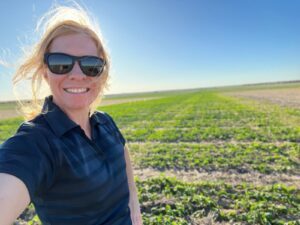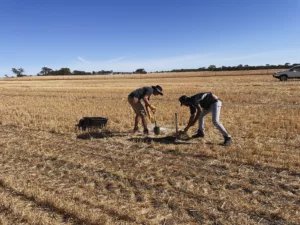AGGREGATE: NEWS & EVENTS
Estimating plant-available potassium in loamy soil
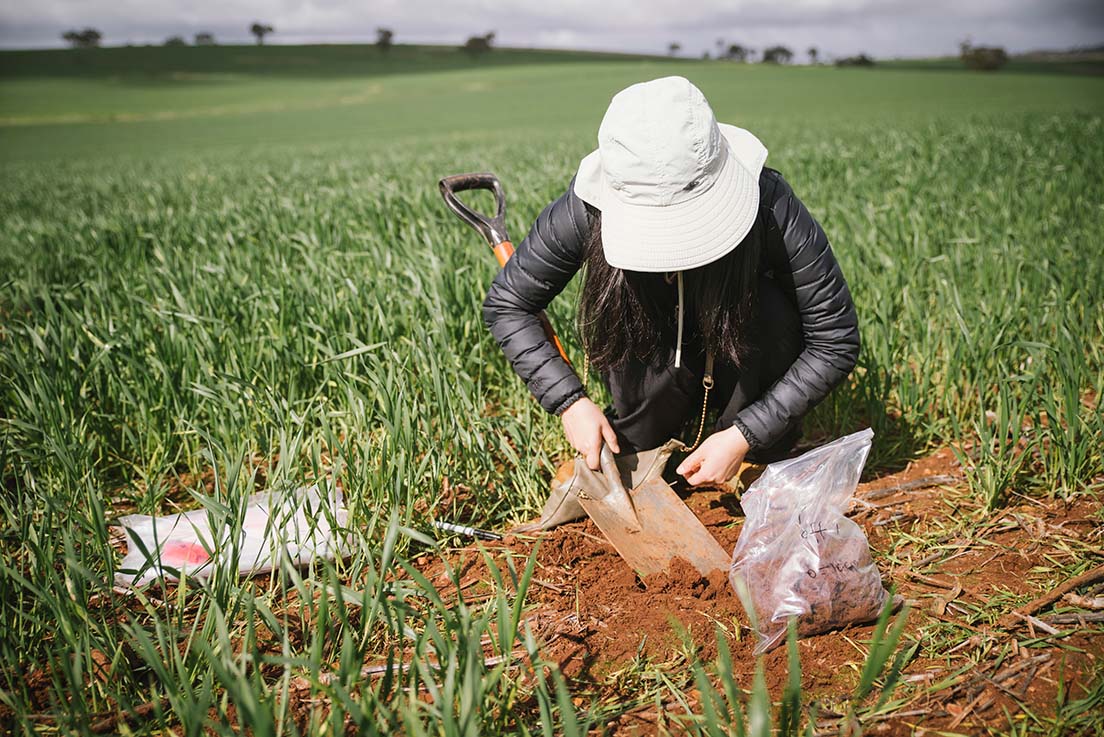
Choosing the best test
Murdoch University postdoctoral researcher Dr Miaomiao Cheng is studying potassium dynamics in heavier-textured cropping soil in WA as part of the NPK project.
KEY POINTS
- Growing potassium rundown in WA is making testing on non-sandy soil more important.
- Researchers compared 9 soil test methods to find the best predictor of plant-available potassium.
- The Colwell K test is the recommended test for loamy soil for single crop seasons.

There are lots of moving parts to consider when making decisions about nutrient management for growing grain. But how can we develop greater confidence in our choices?
One strategy is to be sure that the assumptions behind each decision are based on the most up-to-date evidence and can be adapted to fit within the farming system and all the other decisions this contains.
Growers in Western Australia on loamy and clay soils have been able to rely on soil potassium supply due to its relatively high level, meaning there was previously little economic benefit of applying potassium fertiliser. As these soil stocks have been drawn down over time, symptoms of potassium deficiency have been detected, and current research is focused on areas where these issues are occurring.
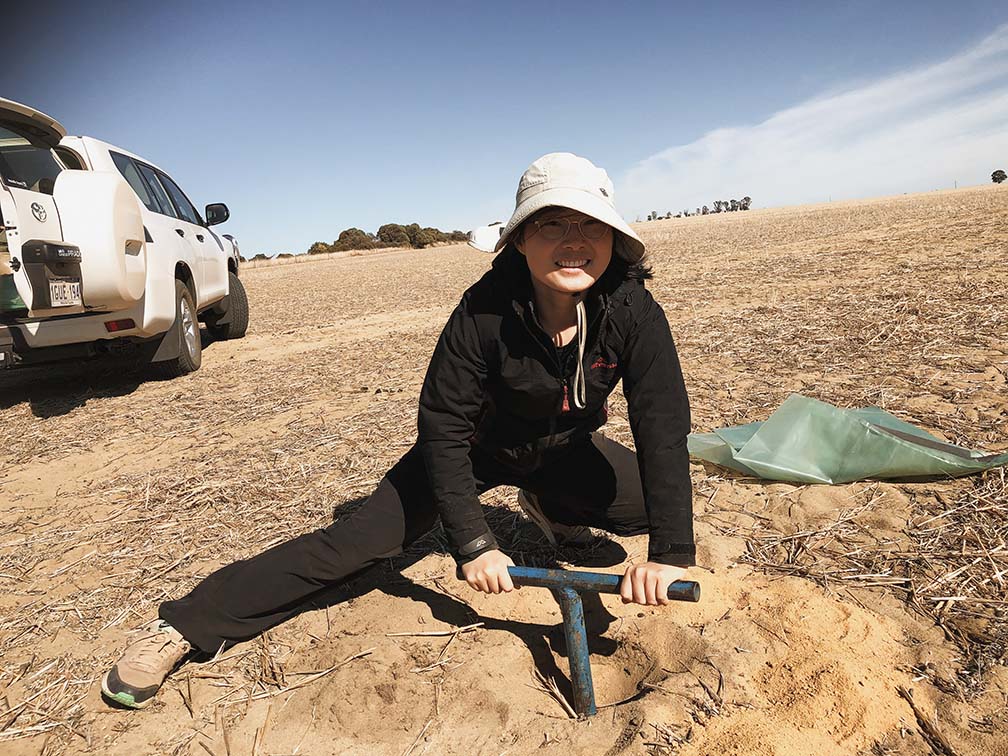
The majority of potassium research in WA has been focused on sandy or duplex soil. These soils had low levels of soil potassium when first cleared for agricultural production and were run down to deficient levels through grain production.
Doubts have now also emerged about the suitability of potassium testing methods on heavier-textured soil because of the greater proportion of clay in the soil that locks up potassium. Some of this potassium that is retained in the clay may be slowly released to the growing plant over time, and some will stay unavailable.
The goal of these tests is to measure the available potassium in the soil and use this as an indicator of the potassium that the crop will be able to access. Different soil tests are better or worse at measuring this potassium across these different pools of potassium in soil. If tests aren’t accurate, fertiliser rates may not be optimised and limit grain yield.
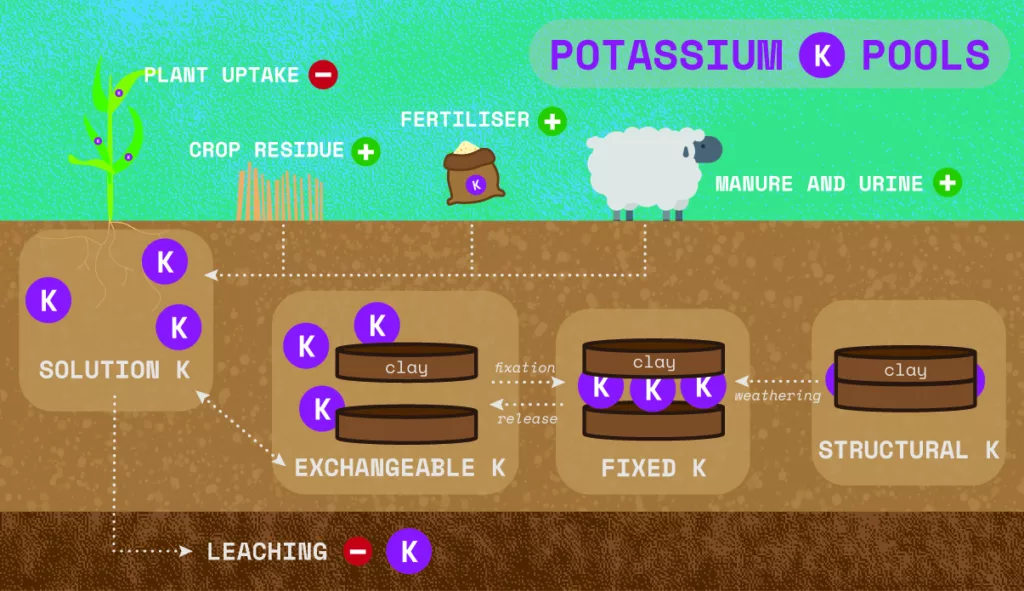
These challenges have raised a key question – what is the best soil test to choose for the loam and clay-textured soils which may have a significant content of K-rich micaceous clays?
Dr Miaomiao Cheng, a postdoctoral research fellow at Murdoch University, along with others on the NPK Project team, designed an experiment to update practical guidelines for potassium testing of heavier-textured soil.
Dr Cheng, along with Murdoch University’s Richard Bell and Qifu Ma, collected soil samples from 21 grain paddocks across the WA wheatbelt from Geraldton to Esperance. Wheat plants were then grown in these soils in a glasshouse experiment. Later, the plants were harvested and the shoots measured for their potassium levels.
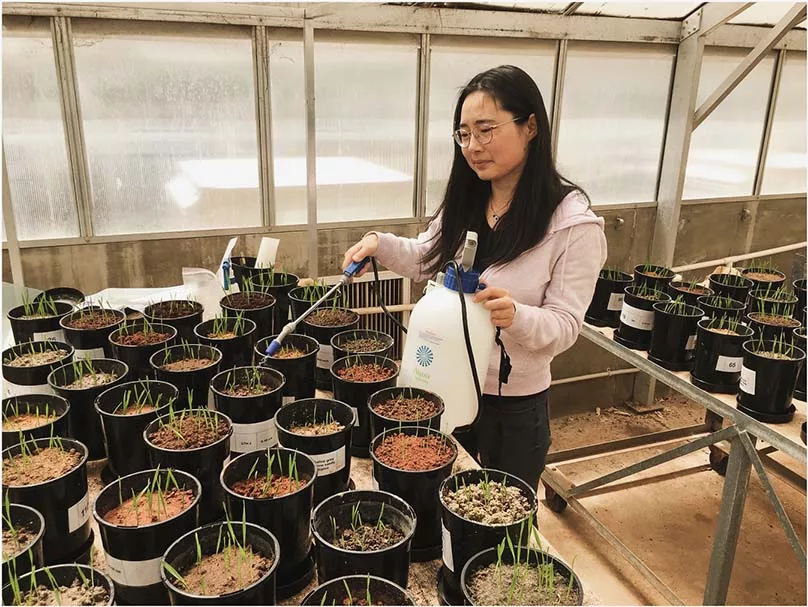
“We compared Nine different soil potassium tests, which captured the main methods used in commercial laboratories around the world, were applied to all the soil samples the wheat plants grew in,” said Dr Cheng.
The potassium values from each soil test method were then compared to the potassium values from the plant measurement. The best performing soil test would be the one with the strongest correlation with the plant test.
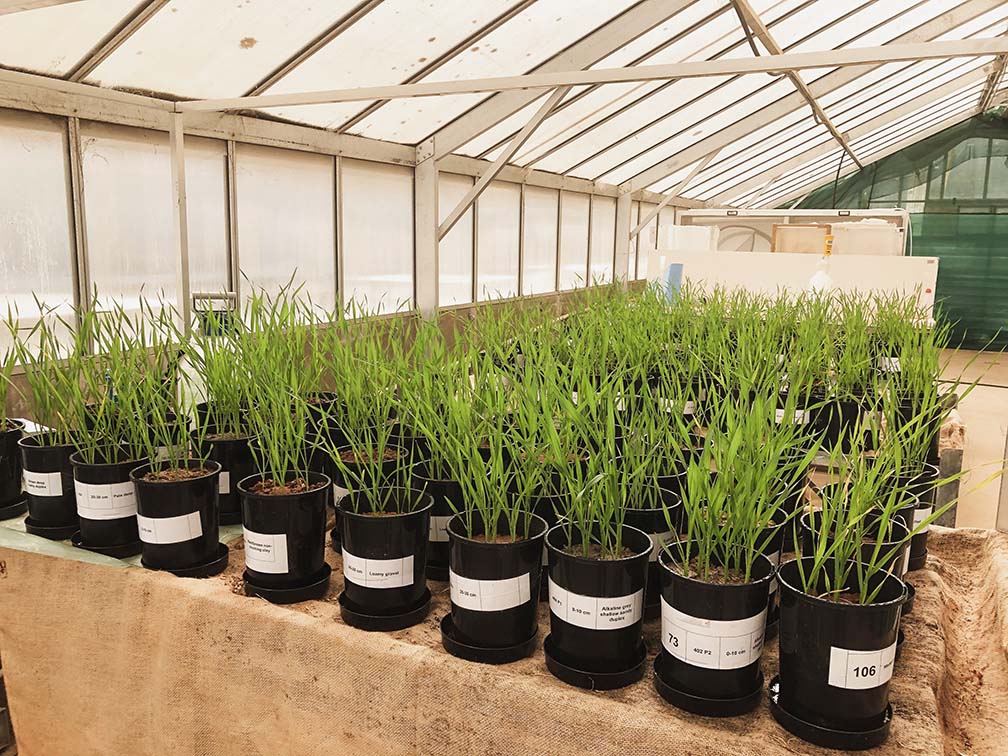
“Two of the tests stood out and produced very similar results – ammonium acetate, and the familiar Colwell K test. Both were accurate for soil with less than 400 mg/kg exchangeable K. At levels above 400, their performance lessened. However, this is not particularly concerning as at this high level of potassium it is not likely to be a limiting factor for crop growth,” said Dr Cheng.
The ammonium acetate test was slightly more accurate, particularly for alkaline soils with high clay content and high cation exchange capacity. However, this test is significantly more expensive, and these are also quite rare soil conditions in WA.
This highlights that Colwell K is the recommended test for loamy soil for single crop seasons. Growers and advisors can be confident in applying this test to determine their potassium strategy on their farm. Potassium soil testing should ideally be conducted pre-planting.
PROJECT INFORMATION
Part of the GRDC project ‘Increasing profit from N, P and K fertiliser inputs into the evolving cropping sequences in the Western Region’ (UMU1801-006RTX).
Disclaimer: Any information contained in this publication does not necessarily the policy or views of SoilsWest nor any of the project partners. No person should act on the basis of this information without first obtaining specific, independent, professional advice.
Current projects
MORE STORIES
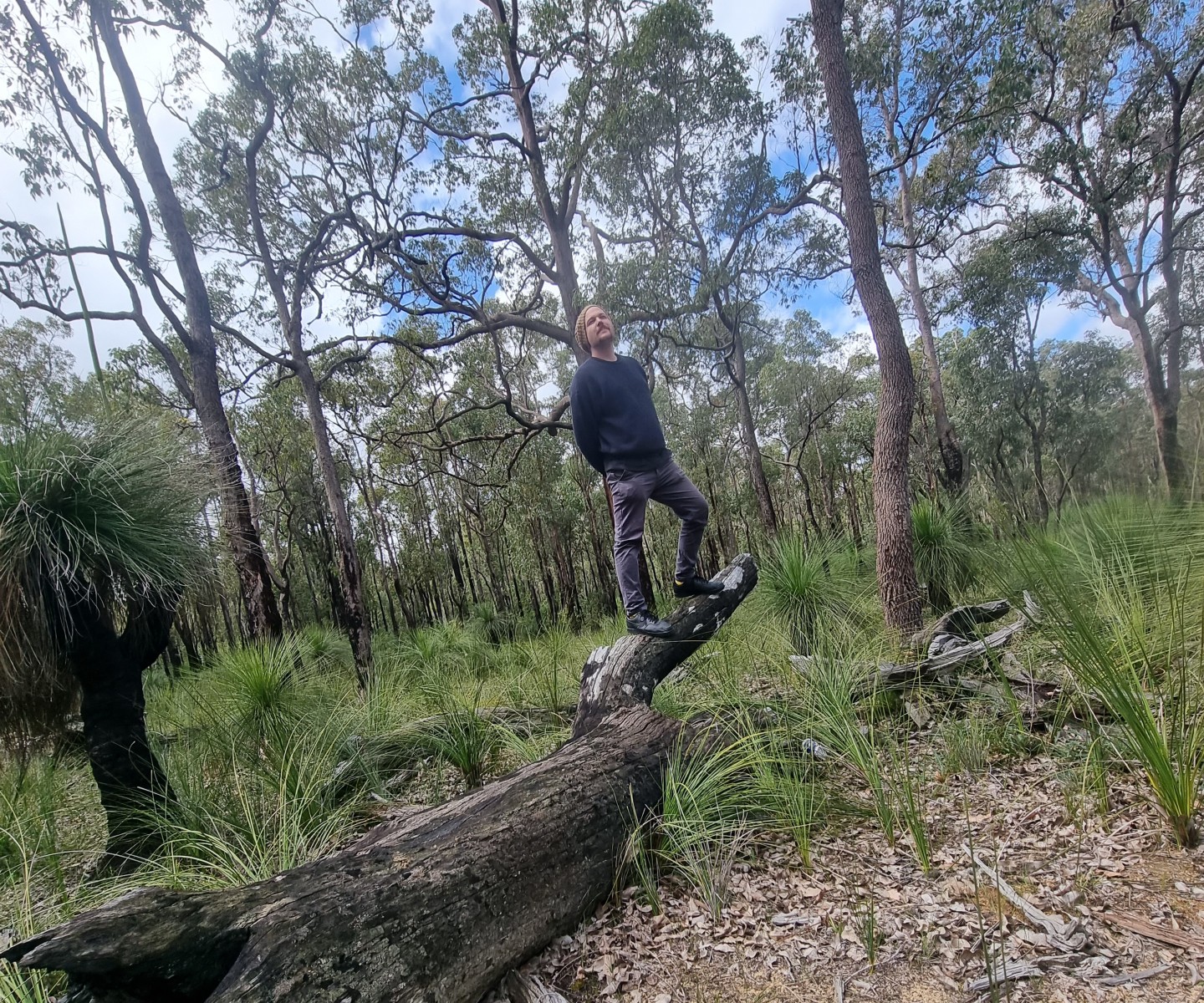
Introducing Steve, Science Communications Coordinator
Steve Lavell recently joined SoilsWest as the Science Communications Coordinator.
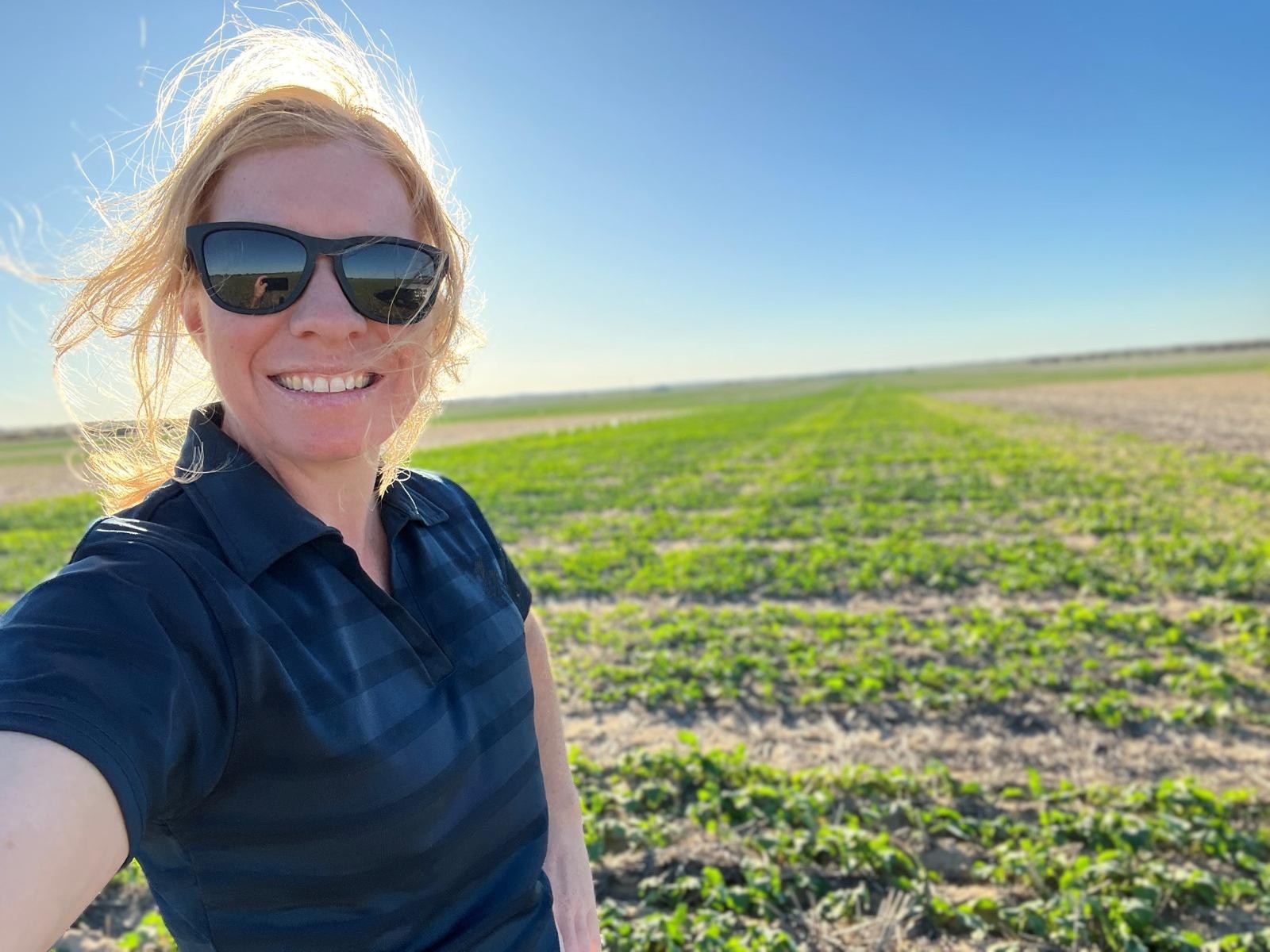
Meet Bridget, our new Regional Soil Coordinator
Briget Watkins was recently appointed as the Southwest WA Drought Resilience and Innovation Hub Regional Soil Coordinator at SoilsWest, Murdoch University.

Agriculture students: Attend the first day of the GRDC Grains Research Update FREE
The free ebook Soil Quality: 10 Plant Nutrition is an interactive, evidence-based resource to better understand and manage crop and pasture nutrition.

New soil knowledge website now online
The free ebook Soil Quality: 10 Plant Nutrition is an interactive, evidence-based resource to better understand and manage crop and pasture nutrition.
